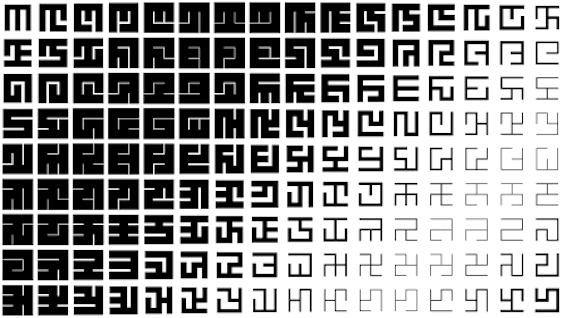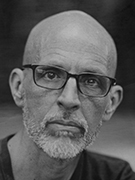Under construction: Jurriaan Schrofer’s letters
Monday, February 10, 2020, 6:30 - 8:30pm

Jurriaan Schrofer (1926–1990) was one of the most prominent design practitioners, educators, and public advocates in the Netherlands after the Second World War. Schrofer’s career was most remarkable early on for his photography book designs, but beginning in the 1960s, his lettering projects occupied an increasing part of his attention, study, and practice. In a free, public event, Maurice Meilleur will survey a selection of Schrofer’s remarkable work, and use his own diagrams and animations alongside Schrofer’s sketches and drawings to discuss a few examples of these lettering projects in greater detail. He’ll then place Schrofer’s projects in their larger context of constructed scripts, using the principles behind their design to suggest what we can learn from them about method, creativity, and meaning in design generally, and type and typography in particular.
The event is free, but registration is required.
Maurice Meilleur is a recovering political theorist turned graphic designer and design researcher an d writer. He completed a PhD in political theory from Indiana University Bloomington in 2004, and earned his MFA in graphic design from the University of Illinois at Urbana-Champaign in 2015. He’s an assistant professor of graphic design at Iowa State University in Ames, Iowa, where he teaches and studies typography and generative design, as well as design methods and semiotics. Maurice has contributed numerous type and book reviews to Typographica and Fonts in Use, and he’s writing a book on the principles and history of constructed scripts. His experimental modular typeface Kast was a jury finalist in the Society of Typographic Aficionados’s 2016 protoType competition. He’s developed Kast into paper, photographic, print, and digital artifacts, and he explores digital animation using Python and Drawbot as part of a larger investigation into typographic representation and algorithmically-defined formal systems.
d writer. He completed a PhD in political theory from Indiana University Bloomington in 2004, and earned his MFA in graphic design from the University of Illinois at Urbana-Champaign in 2015. He’s an assistant professor of graphic design at Iowa State University in Ames, Iowa, where he teaches and studies typography and generative design, as well as design methods and semiotics. Maurice has contributed numerous type and book reviews to Typographica and Fonts in Use, and he’s writing a book on the principles and history of constructed scripts. His experimental modular typeface Kast was a jury finalist in the Society of Typographic Aficionados’s 2016 protoType competition. He’s developed Kast into paper, photographic, print, and digital artifacts, and he explores digital animation using Python and Drawbot as part of a larger investigation into typographic representation and algorithmically-defined formal systems.
Located in the Frederick P. Rose Auditorium, at 41 Cooper Square (on Third Avenue between 6th and 7th Streets)




